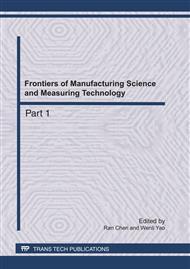p.862
p.867
p.872
p.877
p.884
p.888
p.892
p.896
p.900
Determination of Trace Bismuth in Urine and Tap Water Samples by Atomic Absorption Spectrometry after Solid-Phase Extraction
Abstract:
In this paper, a new method for the determination of bismuth in urine and tap water is described. The methodology combines determined using a hydride generation-atomic absorption spectrometry (HG-AAS) with pre-concentration of the bismuth on the modified organobentonite by dithizone (D-O-bentonite). Optimal experimental conditions for the adsorption and elution of the bismuth, including pH, contact time, eluent concentration, eluent volume and co-existing ions have been investigated. The result showed that the bismuth ion could be adsorbed on the D-O-bentonite. The adsorbed quantitive was affected by the pH value and contact time. In the medium of pH 5.0, the shaking time was 10 min, the adsorption capacity was 15.2 mg·g-1. The bismuth adsorbed on the modified organobentonite by dithizone could be completely eluated by using 2 mol·L-1 HNO3. The method has been applied to the pre-concentration/separation of bismuth in the human urine and tap water samples with satisfied results.
Info:
Periodical:
Pages:
884-887
Citation:
Online since:
May 2011
Authors:
Price:
Сopyright:
© 2011 Trans Tech Publications Ltd. All Rights Reserved
Share:
Citation:


